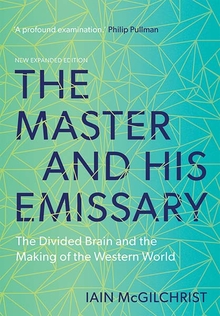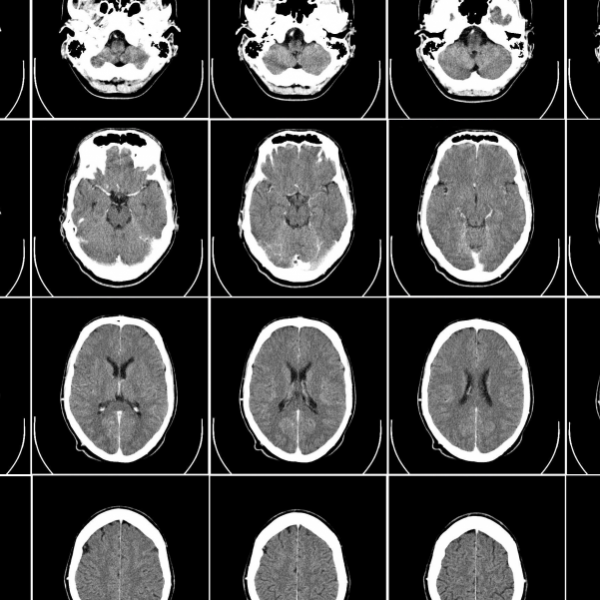Why We Can’t Forget about the Brain
Iain McGilchrist—
It might seem reductive to link the highest achievements of the human mind, in philosophy and the arts, to the structure of the brain. I believe it is not. For one thing, even if it were possible for mind to be ‘reduced’, as we say, to matter, this would necessarily and equally compel us to sophisticate our idea of what matter is, and is capable of becoming, namely something as extraordinary as mind. But leaving that aside, the way we experience the world, and even what there is of the world to experience, is dependent on how the brain functions: we cannot escape the fact, nor do we need to try. At the most basic, some things that we know to be potential objects of experience – sounds at particularly high or low frequencies, for example – are not available to us, though they may be to bats and bears; and that’s simply because our brains do not deal with them. We know, too, that when parts of the brain are lost, a chunk of available experience goes with them. But this is not to hold that all that exists is in the brain – in fact, it demonstrates that that cannot be the case; nor is it to say that mental experience is just what we can observe or describe at the brain level.
OK, but if my purpose is to understand the world better, why do I not just deal with mind, and forget about the brain? And in particular why should we be concerned with the brain’s structure? That may be of academic interest to scientists, but as long as it carries on working, does it really matter? After all, my pancreas is doing fine, without my being able to remember much about its structure.
However one conceives the relationship of mind and brain – and especially if one believes them to be identical – the structure of the brain is likely to tell us something we otherwise could not so easily see. We can inspect the brain only ‘from the outside’ (even when we are probing its innermost reaches), it is true: but we can inspect the mind only ‘from within’ (even when we seem to objectify it). Seeing the brain’s structure is just easier. And since structure and function are closely related, that will tell us something about the nature of our mental experience, our experience of the world. Hence I believe it does matter. But I should emphasise that, although I begin by looking at brain structure in relation to the neuropsychological functions that we know are associated with each hemisphere, my aim is purely to illuminate aspects of our experience.
Freud anticipated that making connections between experience and the structure of the brain would be possible once neuroscience became sufficiently evolved. A neurologist first and foremost, he believed that the mental entities that he described, and whose conflicts shaped our world – the id, the ego and the superego – would one day be more precisely identified with structures within the brain. In other words he believed that the brain not merely mediated our experience, but shaped it too. When we look at our embodied selves, we look back into the past. But that past is no more dead than we are. The past is something we perform every living day, here and now. That other founding father of psychoanalysis, Jung, was acutely aware of this, and surmised that much of our mental life, like our bodies, has ancient origins:
Just as the human body represents a whole museum of organs, with a long evolutionary history behind them, so we should expect the mind to be organized in a similar way . . . We receive along with our body a highly differentiated brain which brings with it its entire history, and when it becomes creative it creates out of this history – out of the history of mankind . . . that age-old natural history which has been transmitted in living form since the remotest times, namely the history of the brain structure.
The brain has evolved, like the body in which it sits, and is in the process of evolving. But the evolution of the brain is different from the evolution of the body. In the brain, unlike in most other human organs, later developments do not so much replace earlier ones as add to, and build on top of, them. Thus the cortex, the outer shell that mediates most so-called higher functions of the brain, and certainly those of which we are conscious, arose out of the underlying subcortical structures which are concerned with biological regulation at an unconscious level; and the frontal lobes, the most recently evolved part of the neocortex, which occupy a much bigger part of the brain in humans than in our animal relatives, and which grow forwards from and ‘on top of’ the rest of the cortex, mediate most of the sophisticated activities that mark us out as human – planning, decision making, perspective taking, self-control, and so on. In other words, the structure of the brain reflects its history: as an evolving dynamic system, in which one part evolves out of, and in response to, another.
I think we would accept that the conflicts that Freud helped identify – between will and desire, between intention and action, and broader disjunctions between whole ways of conceiving the world in which we live – are the proper concern, not just of psychiatrists and psychologists, but of philosophers, and of artists of all kinds, and of each one of us in daily life. Similarly, understanding the way in which the brain’s structure influences the mind is of relevance not just to neuroscientists, or psychiatrists, or philosophers, but to everyone who has a mind or a brain. If it turns out that there is after all coherence to the way in which the correlates of our experience are grouped and organised in the brain, and we can see these ‘functions’ forming intelligible wholes, corresponding to areas of experience, and see how they relate to one another at the brain level, this casts some light on the structure and experience of our mental world. In this sense the brain is – in fact it has to be – a metaphor of the world.
From The Master and His Emissary by Iain McGilchrist. Published by Yale University Press in 2019. Reproduced with permission.
Iain McGilchrist is a former fellow of All Souls College, Oxford, where he taught literature before training in medicine. He now lives on the Isle of Skye, where he continues to write, and lectures worldwide.
Further Reading:



























